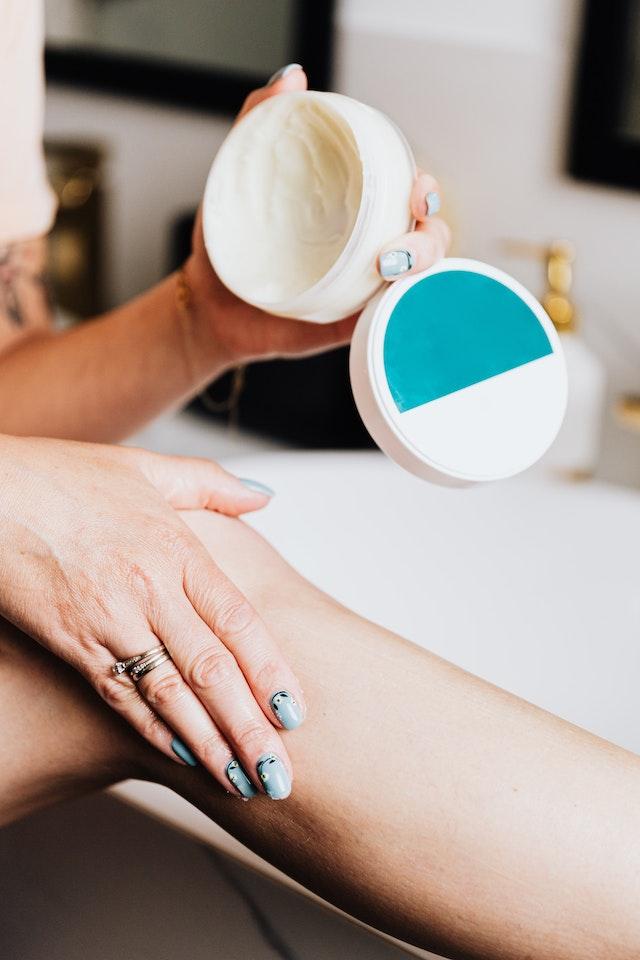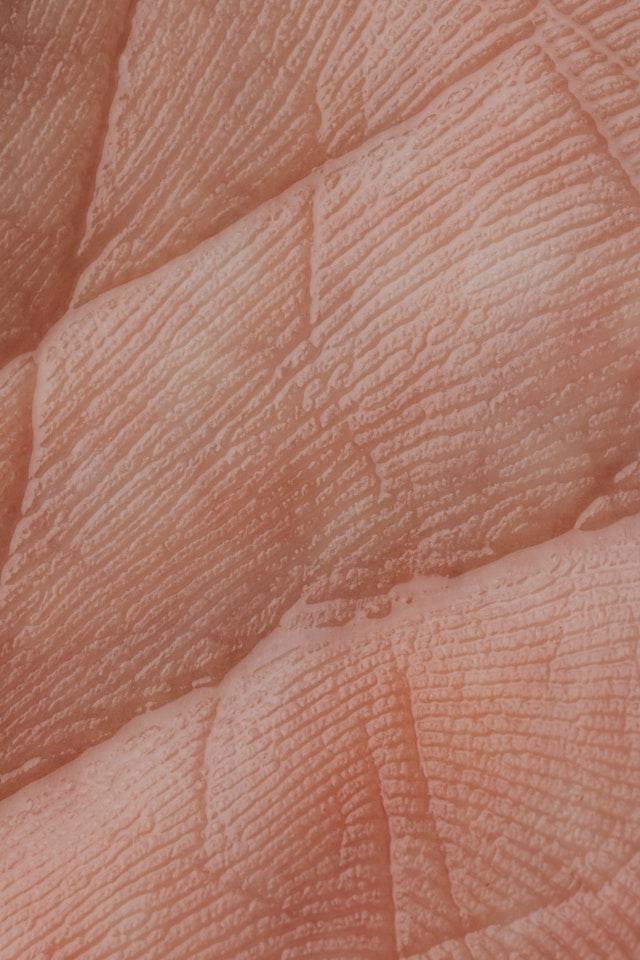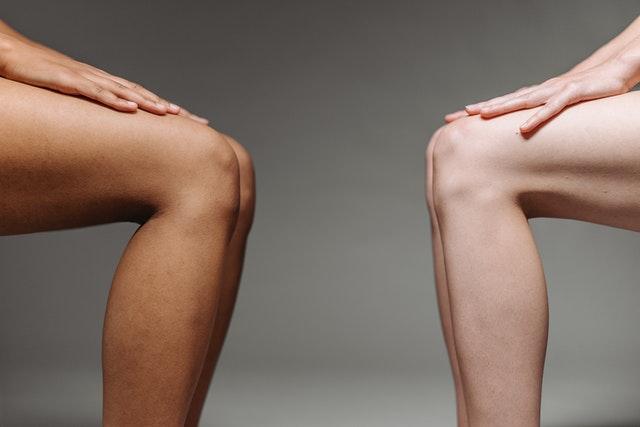Posts Tagged ‘diabetic skin problems’

What is the Best Lotion for Diabetic Skin?
The Best Lotion for Diabetic Skin
Skin conditions are often dreaded by a majority of people given the health and beauty complications that often accompany them. This problem is however prevalent among those diagnosed with diabetes.
For instance, several studies conducted on the matter a while back revealed that nearly 30% of individuals diagnosed with diabetes mellitus usually experience some form of skin problem at some stage of their sickness.
The majority of these skin disorders prevalent among diabetics are usually attributed to comorbid health conditions such as candida and impetigo infections among others.
Subsequently, those diagnosed with type 2 diabetes further have double the risks of developing the common scaly disease, psoriasis, compared to non-diabetics.
Diabetic dermopathy
Diabetic dermopathy is one of the major skin conditions found to occur in nearly 30% of patients diagnosed with diabetes. This skin problem is usually characterized by unique and distinguishing features that most often appear on the shins of the affected.
They usually resemble solar lentigines and due to their location on the body, they are occasionally referred to as shin spots or in some circles as pigmented pretibial patches.
What are the causes of diabetic dermopathy?
Experts in the field are yet to pinpoint the exact cause of diabetic dermopathy. Nonetheless, several studies and theories have often been put forward regarding the matter. For instance;
Some scholars have associated the condition with diabetic neuropathic and vascular complications as relevant studies indicated diabetic dermopathy to be more prevalent among diabetic patients with neuropathy, nephropathy, and retinopathy.
Subsequently, other studies have also pinpointed that it tends to occur among older patients especially those who have had diabetes for at least 10-20 years.
Others have also linked diabetic dermopathy to increased glycosylated hemoglobin, an indicator of poor control of blood glucose levels.
It is also thought that diabetic dermopathy may be a magnified response of the body to an injury or trauma in bony parts of the body like the shin.
This is because, lesions often occur over body parts of the body and several studies have also discovered that shin spots usually appear in response to traumas with heat, cold or blunt objects among diabetic patients.
Signs and symptoms of diabetic dermopathy
Identifying this condition is usually straightforward given the manifestations that often appear on the skin and in particularly one region of the body. They are commonly found on the shins.
However, on rare occasions, few lesions can often be found on the front of the thighs, forearm, side of the foot, scalp, and even along the body trunk.
Their distinguishing features include the fact that the lesions are often;
- Round or oval shaped
- Reddish-brown in color
- Initially scaly but later on flattens out and becomes indented
- Commonly appear on both shins
Having four or even more lesions is usually a direct indication of diabetes and as such, undiagnosed individuals presenting with shin spots are always advised to seek medical testing and further investigations as this could help rule out the possibility of an early case of diabetes.
The treatments for diabetic dermopathy
The condition is usually harmless and as such does not require any form of treatment as they tend to decline and go away in just a couple of years. This is usually fast-tracked by improved blood glucose control.
Diabetic Bullae
This is another skin condition associated with individuals with diabetes. Also known as Bullosis diabeticorum, this condition usually appears in the form of blister-like lesions occurring spontaneously on the hands and feet of individuals with diabetes.
The condition is however quite rare but similarly significant as it is usually among the distinct markers for diabetes.
Several studies conducted on the condition revealed that it is usually more prevalent among men than women and between the ages of 17 to 84 years. They are also common in patients with long-standing diabetes or comorbid diabetic complications like neuropathy among others.
Diabetic bullae is usually characterized by few but distinct signs and symptoms. These include;
- The blisters usually appear on the hands or feet
- They are usually painless
- The blisters measure 0.5 to 17 centimeters in diameter
- They have irregular shapes
There are two common and properly defined types of diabetic bullae and they are;
Intraepidermal bullae – these usually boast unique blisters filled with clear and sterile viscous fluid. The blisters normally heal spontaneously without scarring or atrophy in 2-5 weeks.
Subepidermal bullae – the blisters in this category are usually filled with blood and healing may sometimes exhibit scarring and atrophy. Nonetheless, they are usually less common among diabetics.
Diabetic bullae often heal spontaneously without applying any form of treatment in most of cases. To guarantee this, diabetic patients are usually encouraged to avoid breaking the blisters at all costs as this would prevent secondary infection which may complicate the healing process.
Diabetic stiff skin
Also referred to as diabetic cheiroarthropathy or digital sclerosis, diabetic stiff skin is another common skin condition among diabetics especially those with long-standing type 1 diabetes. The condition is often characterized by;
- Restricted mobility of the joints of an individual’s hands
- Stiff, waxy, thickened, and yellowed skin
- Patients may also suffer from Dupuytren contracture (tendon tightening) which bends their fingers
The condition is thought to develop due to the reaction of glucose with proteins in the skin and essentially increased amounts of glycation end products.
Other dermatological conditions associated with diabetes
Apart from the few significant skin conditions associated with diabetes mentioned above, there are several others which include;
Foot ulcers
Necrobiosis lipoidica – manifests as yellow, waxy plaques on the skin
Reactive perforating collagenosis and Kyrle disease – common among diabetics with renal failure
Scleroderma – a rare type 2 diabetes complication causing skin thickening in the neck and upper back
Eruptive xanthoma – this is associated with high levels of cholesterol and triglycerides. Appears on the hands, arms, feet, legs, and even buttocks
Skin tags
Xanthelasma – manifests as multiple yellowish scaly patches on and around the eyelids
Vitiligo – this is an autoimmune condition that sometimes develops due to type 1 diabetes
Acanthosis nigricans – this usually manifests as darkening and thickening of skin folds. Thought to manifest as a result of insulin resistance
Pruritus – is associated with numerous causes such as yeast infection, dry skin, neuropathy, or poor blood flow
Cutaneous dysaesthesia – associated with small fiber neuropathy
Bacterial skin infections – these are several and inclusive of stye, boil, abscess, paronychia, cellulitis
Fungal infections – specifically Candida albicans
Top 5 lotions for diabetic skincare
Whereas most of these dermatological conditions associated with diabetes do not require treatment, they often require proper management to ensure that they stay hydrated, soft, and unbroken.
This is because, without proper care, even managing your blood glucose level may not make them go away since some may invite infections further complicating a diabetic’s life.
As such, the following lotions are some of the best and most recommended by experts to ensure you manage your skin condition effectively until they effectively heal. They include;
- Gold Bond Ultimate Hydrating Lotion Diabetics’ Dry Skin Relief, Moisturizes & Soothes
- Terrasil Wound Care – 3X Faster Healing, Infection Protection Ointment
- CeraVe Diabetics Dry Skin Relief Bundle
- EASE-Z Diabetic Lotion for Dry Skin
- GOLD BOND ULTIMATE Diabetics Dry Skin Relief Foot Cream
Frequently Asked Questions (FAQs)
Does diabetes cause skin changes?
Yes. This is because skin changes are one of the most common signs of diabetes and can often be used in diagnosing an individual not yet tested.
The skin is one of the major body organs massively affected by diabetes. Nevertheless, an early diagnosis and proper glucose level regulation may limit these skin changes thereby preventing any associated major complications.
What does diabetic skin look like?
Several individuals may often present with varying skin configurations when suffering from diabetes. In fact, some may even present with normal skin composition depending on the stage, severity, and type of diabetes they suffer from.
For instance, diabetes may cause some changes in the small blood vessels in the skin resulting in several manifestations.
An example is diabetic dermopathy which often looks like oval/circular reddish-brown scaly patches, another one is diabetic bullae presenting as skin with blister-like lesions among other varieties.
What is diabetes dermatitis?
Also referred to as Acanthosis nigricans, this skin condition is usually characterized by dark, thick velvety patches in body folds and creases.
It is thus often more prevalent on the skin around the neck, groin, and armpit regions. It is common with type 2 diabetics as it is caused by high blood insulin levels, insulin resistance, which causes skin cells to reproduce faster than the normal rate.
Can you reverse sugar damage to the skin?
There is no definitive way to reverse sugar damage to the skin as it is a one-way process. The process known as sugar sag develops when your skin loses its resiliency and starts to wrinkle and sag.
Essentially, the process leads to cross-linking of the collagen fibers in the skin, an irreversible process.
Does metformin affect your skin?
Metformin, which is a widely used drug among diabetic and obese individuals, has been found to exert several effects on the skin. As such, it could potentially induce a variety of dermatoses.
For instance, some of the commonly identified drug-induced reactions among associated individuals like diabetics include the manifestation of rashes, urticarial, and lichenoid eruption, among others.
How long after quitting sugar doe one’s skin improve?
Sugar is often associated with numerous skin conditions among them acne which affects a great number of people. Therefore, quitting sugar should have some positive effects on the skin.
Nonetheless, these changes are not usually instantaneous and thus take time to reflect. As such, studies have shown that changes may start to manifest after six weeks of behavior modification, however, big visible changes on the skin may take even longer, about 3 to 4 months after cutting down on sugar.
What is CARB face?
This is the extra puffiness often manifested in the faces of those who over-indulge in eating excess carbs like too much bread, pasta, and pizza among others. It is thus prevalent among those with a weakness for carbohydrate-filled foods.

Common Diabetic Skin Conditions
When a person has diabetes, it throws their whole body off balance. They not only have to worry about the natural things that come with everyday life like eating healthy, getting enough sleep and exercising, but they also have to be mindful of all the complications that arise from their disorder. Diabetic skin problems is one of the most common concerns diabetics face. 30% of diabetics will develop skin conditions related to their diabetes.
Some of the most common skin conditions diabetics face are dry skin, and also itchy, red, and scaly legs. For the ones with type 2 diabetes, they are more vulnerable to developing a skin condition. Here is a close look on the common diabetic skin conditions.
Diabetic Dermopathy
This is a common skin condition that occurs in people with diabetes. It is characterized by reddish or light brownish spots on the legs. In most cases, it is found on top of the feet, thighs and shins. There have been reports that diabetic dermopathy can lead to permanent skin discoloration if left untreated.
Cause of Dermopathy
Dermopathy is the damage caused on the skin that leads to the formation of these brownish spots. This can be caused from dryness and itching due to poor circulation and itching. The disease is more common in older people and those with type 2 diabetes.
Mostly, after trauma or injury, these spots will take up to 2 weeks to form. Dermopathy is considered as a complication of diabetes and the lack of blood in the area where the skin damage occurs is responsible for this condition.
Dermopathy Signs and Symptoms
When the skin is in contact with water, it will form a dark ring around the damaged area. This dark ring is commonly seen when you are taking a bath or shower. Dermopathy will appear on the legs in areas like ankles, knees and thighs. The spots will turn brown and scaly as they enlarge.
Dermopathy Treatment
Dermopathy is not a serious skin condition. However, it is important to address the problem early to avoid further complications. People with diabetes should take good care of their skin by practicing good hygiene and using moisturizers to prevent further damage.
Diabetic Bullae
Also known as diabetic blisters, this skin condition develops when a person’s skin is exposed to too much moisture. It is usually found in the neck and armpits.
Cause of Bullae
In diabetes, the blood vessel in the skin becomes fragile, thus leading to increased blood flow and heat. When this happens, the blood vessels within the skin experience damage. In response to this damage, the skin will raise a blister on its surface.
Bullae Signs and Symptoms
The first sign of this condition is a reddish spot on the skin. The spot will expand and it will turn up to become red, painful, and itchy. The blisters should be popped and treated to prevent infection.
Bullae Treatment
To prevent infection of the affected area, it is best to wash the affected skin with antibacterial soap at least twice each day. The blisters should be popped as soon as they appear.
Diabetic Stiff Skin Syndrome
Also known as diabetic dry skin, this skin condition develops when a person’s skin cannot return back to its normal state after being stretched. It is usually found on joints like the fingers and toes.
Cause of Stiff Skin Syndrome
The stiffness of the skin is caused by the lack of collagen in your blood vessels. In diabetes, the amount of collagen produced by your body is less than normal. When this happens, the skin cannot return back to its normal state after being stretched.
Signs and Symptoms of Stiff Skin Syndrome
When this condition develops, the skin of a person will be rough and hard. The person will feel pain when stretching the affected area. In some cases, it can lead to the development of ulcers on the area.
Stiff Skin Syndrome Treatment
Stiff skin syndrome can be treated by restoring the blood supply to the affected area. This can be achieved by wearing cotton gloves when you are doing your daily activities. Also, it is important to keep the skin hydrated and moist to help in flushing out the excess waste your body produces.
Other Common Skin Conditions
Here are some of the other common skin conditions diabetics face:
1. Scleroedema – Scleroedema is a skin condition that occurs from the development of edema in the body. Mostly around the neck and upper back.
2. Scabies or pubic lice – This condition is caused when the body’s immune system is unable to attack and destroy the parasites.
3. Acanthosis nigricans – Most of the cases of this skin condition are seen on the back, chest and neck. It is characterized by dilated blood vessels that are dark and velvety-looking.
4. Vitiligo – This condition is characterized by white pigmentation loss of skin. It is caused by a lack of pigment in the hair and skin.
5. Corneal ulcer – This skin irritation occurs when the natural substances that protect the eye from infection is depleted or damaged.
How to Manage Diabetic Skin Conditions
To help manage your diabetic skin conditions, it is best to practice the following:
i. Maintain a healthy diet
Your diet plays an important role in your health. Eating the right kind of food will not only help prevent diabetes but it will also help you manage its complications. The foods you eat should be filling and provide sufficient nutrients to your body. Make sure that your diet is not lacking in fiber as it can help to purge toxins from your skin. Also, eat healthy fats like Omega-3 fatty acids and Omega-6 fatty acids.
ii. Manage your stress level
Managing your stress is one of the best ways to help combat diabetes. It is a stressful condition that can trigger or aggravate the skin conditions you have. One way you can manage your stress level is by exercising regularly. Exercise is an effective way to manage stress because it helps you to destress and relieve your body of excess toxins.
iii. Take care when showering or bathing
Avoid taking too hot of a bath or shower. The water will increase your skin’s temperature and it may cause the blood vessels to dilate and expand. Taking a hot shower can also dry out the skin causing it to become dry and brittle.
iv. Use moisturizers
Moisturizers help keep your skin moist, soft and supple. Apply moisturizer on your skin as soon as you get out of the bath or shower. This will help to prevent your skin from getting irritated and cracked.
Diabetes takes a toll on the body. It cannot only make you sick but it can also make you look old and unattractive. The condition can cause a variety of skin problems like the ones we discussed above. The good news is, managing your diabetes will also help you manage your skin. Follow the above guidelines and you will surely feel better about yourself.






